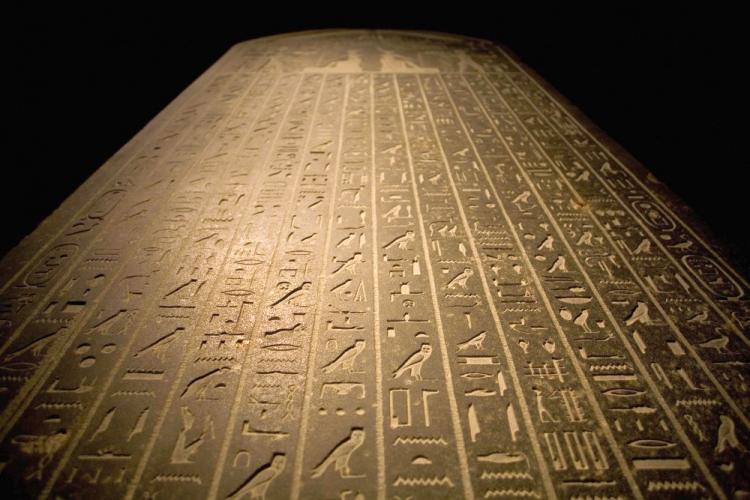“To understand a language isn’t the same as living it,” explains Clarisa M. who admits to difficulties remembering her mother tongue. Chilean born, but currently residing in Australia, Clarisa claims to experience small hesitations when she tries to speak her native language. Having spent 35 years away from her homeland, she has had to relearn part of the Spanish language, which according to her, only exists “in the depths of her subconscious.”
Learning a language is no easy task, and maintaining fluency is, for most, a constant struggle. However, there are some individuals capable of commanding great skill in several languages. These are the world’s polyglots.
One of the more surprising and recent cases of the hyperpolyglot phenomenon is that of young German-born Sebastian Heine, who has been dubbed the “Human Tower of Babel.” By the time he was 22 years old, this student of Indo-German philology could communicate in no fewer than 35 distinct languages, of which he prefers Pashto, spoken by a Middle-Eastern ethnic minority.
While many have labeled him a prodigy, Sebastian affirms that he’s no genius—merely an individual dedicated to the study of languages. His love of language began at only 7 years old when he was introduced to Greek, approaching it almost as a game. Today Heine has set a “modest” goal for himself: learn two new languages a year.
The case of Jorge Fernandez, while he hasn’t mastered nearly as many languages as Heine, is still incredible. At only 18 years old, this Peruvian could speak and fluently write in a dozen languages, including Spanish, English, French, German, Swiss, Romanian, Italian, Portuguese, Dutch, Catalan, Gallego, and Mandarin.
According to Jorge, his obsession with languages began when his mom punished him for getting bad grades in high school by taking away his phone privileges. Fernandez suddenly found that he had more time on his hands—and a desire to communicate.
One required French course awakened Fernandez’s curiosity, and he then continued with Italian and Romanian on his own. The next nine languages came shortly afterward, and now the young Fernandez says he aims for fluency in 25 languages some day.
Mastery of over 30 languages is certainly impressive, but who is the biggest polyglot in the world? How many languages can one human mind master? More than 40. More than even 50. Ziad Youssef Fazah holds a basic understanding of at least 60 distinct languages. Of course, as Clarisa stated above, “to understand a language isn’t the same as living it.” The same applies to Fazah, who must regularly exercise his skill in these acquired languages so that he doesn’t lose what he’s learned.
Great Polyglots in History
It seems that whenever we have an understanding of the limits of the human mind, there are always a few people who are able to go beyond it. When it comes to multilingual proficiency, Cardinal Giuseppe Caspar Mezzofanti and linguist John Bowring are two such individuals who had far surpassed what many thought was possible.
The cardinal was born on September 17, 1774. He was able to command fluency in 38 languages and nearly 100 dialects, and he possessed a basic understanding in many more languages. It has been determined that, in total, the cardinal knew approximately 100 distinct forms of communication.
It can be said that Bowring was one of the most scholarly linguists ever known. He demonstrated a basic understanding of over 200 languages and was fluent in about 100. Bowring was born in 1792. He was governor of Hong Kong as well as an author and world traveler. He received the title Gentleman of the Bath Order and was a member of the Royal Society and the Royal Geographical Society. Up to today, no one has known a better interpreter of language than Bowring.
Expanding Communication
While they may not have mastered as many languages as the incredible hyperpolyglots mentioned above, several contemporary historical figures can also boast fluency in multiple languages. It is no surprise that these individuals are also known as great communicators.
The papacy has a long history of multilingualism, and the tradition has carried up through today with the most recent popes: John Paul II and Benedict XVI. The former could fluently speak Polish, Classic Greek, Latin, Italian, French, Spanish, Portuguese, English, Esperanto, and German, and had basic knowledge in Czech, Lithuanian, Russian, Hungarian, Japanese, Tagalog, and some African languages. The latter possesses fluency in at least a dozen languages.
Polyglot writers James Joyce and J.R.R. Tolkien each knew 13 languages.
The archeologist Jean-Francois Champollion—who also commanded fluency in 13 languages—helped decipher ancient Egyptian hieroglyphics by translating the Rosetta Stone in 1822, thanks to his extensive knowledge of Coptic.
Among the other great language prodigies is linguist Kenneth Locke Hale, who demonstrated an incredible skill at learning languages quickly and precisely. During his studies of syntax and lexicons at MIT, Hale set his sights on unstudied and endangered languages, such as those of the Hopi, Navajo, and Australian Walpiri. In total, Hale ended up mastering 50 distinct languages.
The world of languages is fascinating, and there are many benefits to acquiring fluency in more than just one. In fact, there are more multilingual individuals in the world then there are monolinguals, as the United States is one of the few countries in the world that doesn’t require learning a second language in school.
Learning new languages not only brings us closer to the rest of the world; it can also offer linguistic insights that might never be found in our native tongue. But if you want to learn a new language, it’s best to start early. Studies show that the younger you are, the easier it is to pick up a new language.







Friends Read Free